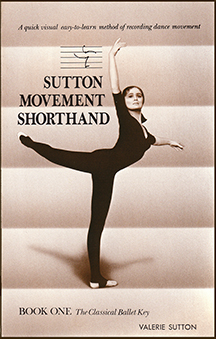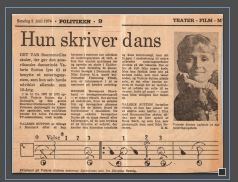|
History
of SignWriting
The Early Years
|
 |
Chapter
1: DanceWriting
The Early Years: 1966-1974
SignWriting
comes from DanceWriting. It stems from
a "movement notation system".
It was not invented from a prior knowledge
of signs or signed languages. Nor is it
connected to any one signed language,
but instead records them all with the
same symbols.
In other words, you do not have to know
what signs mean to write them, since the
system records "body movement".
With SignWriting, signers can not only
record their own signed languages, but
foreign signed languages as well.
Of course, as SignWriting is used by more
and more people, certain "linguistically
based" writing conventions are developing.
But from the historic perspective, DanceWriting
was the "forerunner" to SignWriting.
Now SignWriting far exceeds DanceWriting
in the number of users.
Other dance notation systems have recorded
the movements of signed languages in the
past (as experiments), but SignWriting
is different, because it is used by hundreds
of people, mostly Deaf, all over the world.
In 1997, SignWriting is becoming the "written
form" for signed languages in 14
countries.
Below you will find a brief listing of
some of the more important events in the
early history of Dance Writing, which
lead to the invention of SignWriting...
|
1966
DanceWriting Begins
Valerie Sutton, an American, at age 15,
was in professional ballet training. She
invented a stick figure notation system
for recording ballet steps, for her own
personal use.
|
1970-1972
Records Historic Danish Ballet Steps
Sutton moved to Copenhagen, Denmark, at
age 19, to train with teachers of the Royal
Danish Ballet. At that time, the world-renowned,
historic ballet steps of the Royal Danish
Ballet, called "the Bournonville Schools",
were being forgotten for lack of recording.
Sutton used her personal dance notation
system to record and preserve these historic
dances. The project stimulated the improvement
of the writing system. |
December,
1973
Sutton Movement Shorthand, The
Classical Ballet Key, Key One
by Valerie Sutton. This was the first
DanceWriting textbook. It is an historic
record of how the system was originally
invented. Within one year after publication,
this first text was out-of-date because
of improvements in the system.
|
Fall,
1974
DanceWriting Taught To The Royal Danish
Ballet
Eight week course taught to 30 dancers,
by special invitation from Ballet Master,
Flemming Flindt. |
June,
1974
Danish Newspaper Articles About DanceWriting
Stimulate SignWriting Development
Sign Language researchers at the University
of Copenhagen read about the system and
asked to see a demonstration.The article in the Politken in June 1974 stimulated the beginning of SignWriting. See next page...
|
 |
History
of SignWriting
The Early Years |
 |
|


















